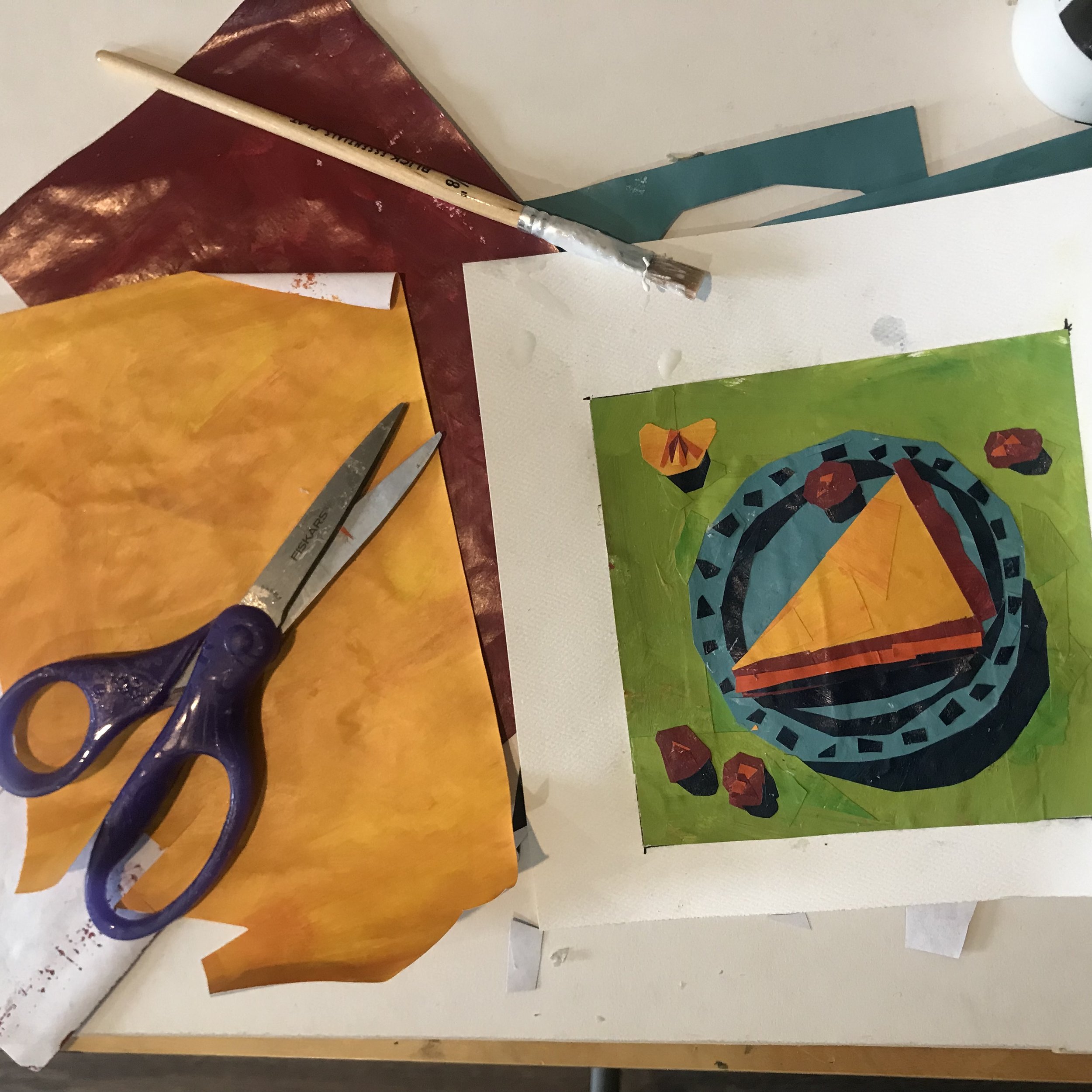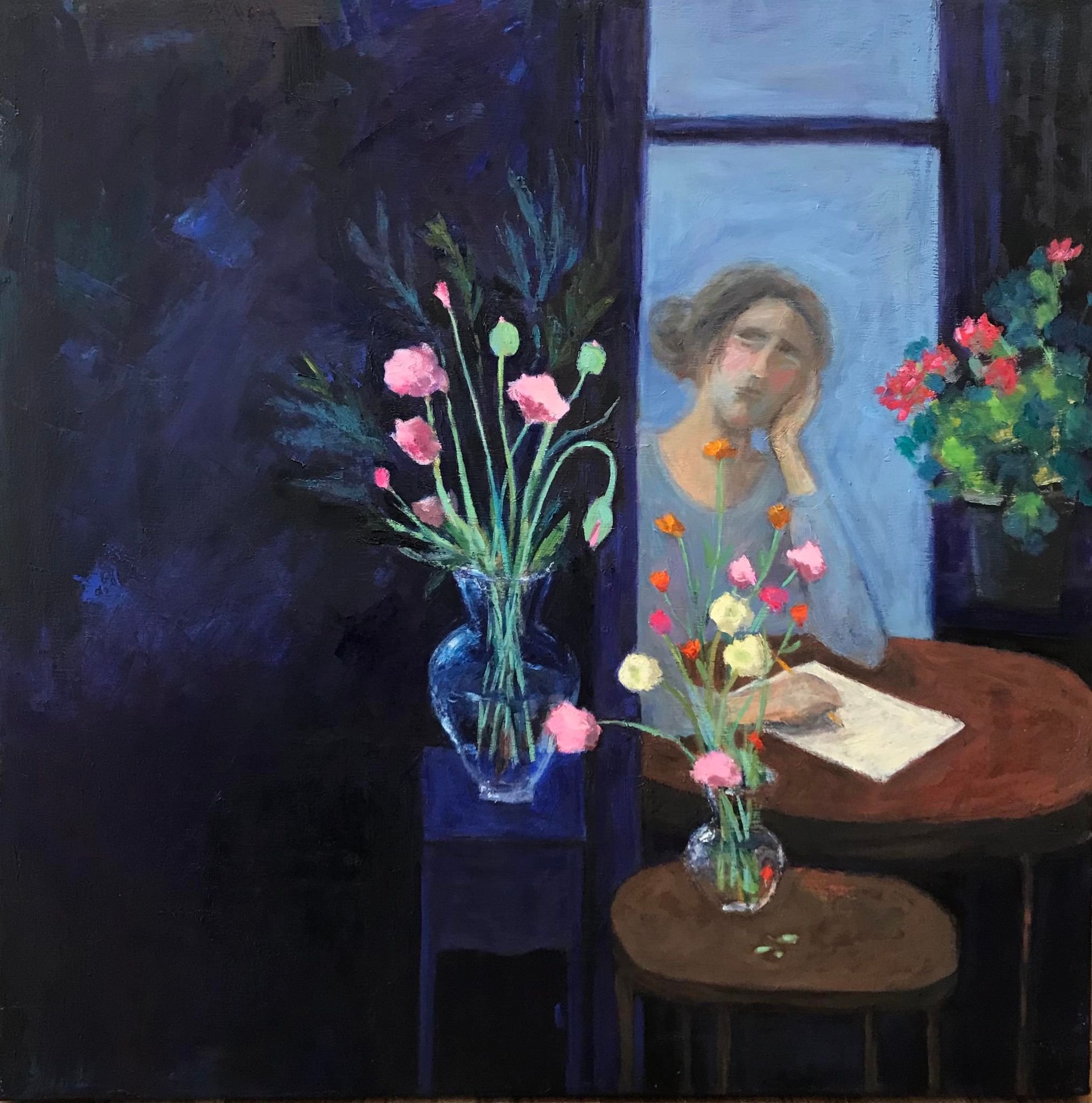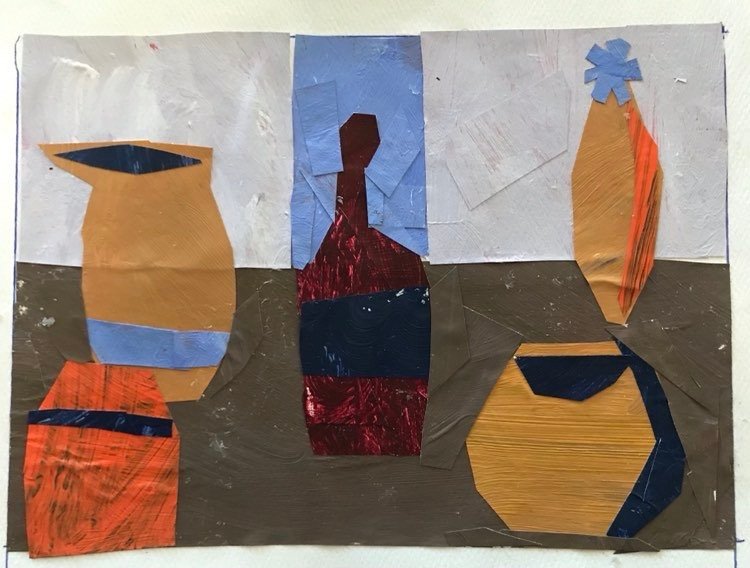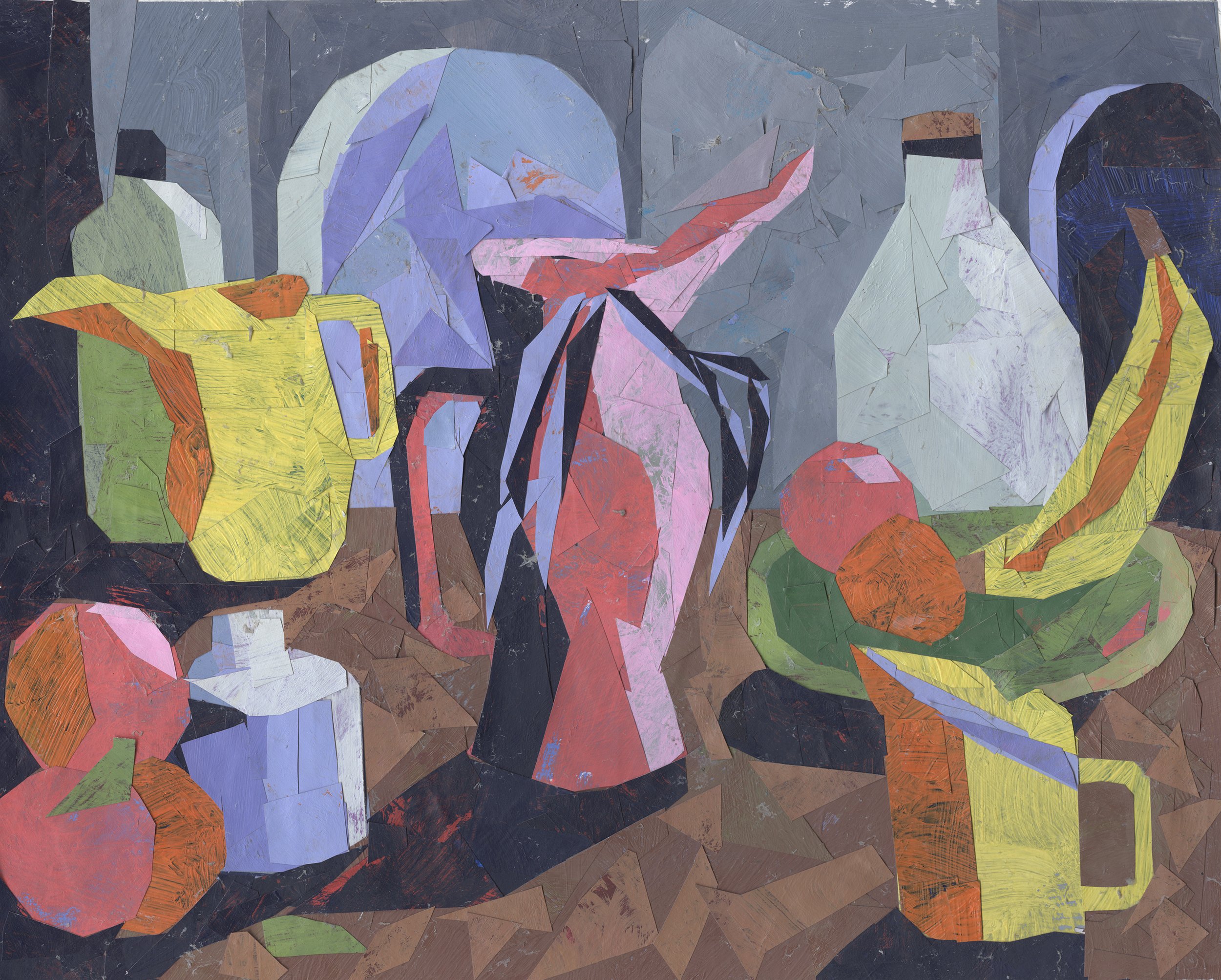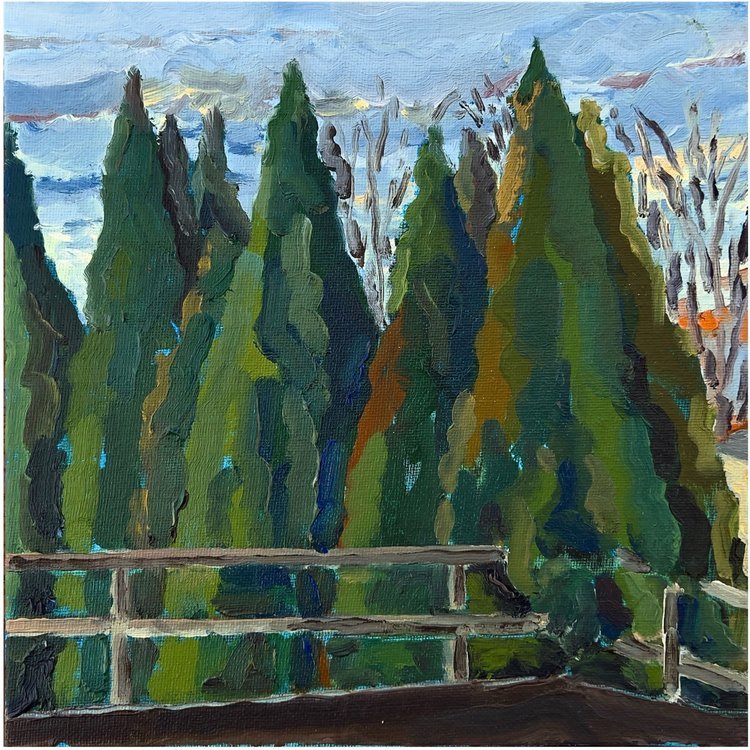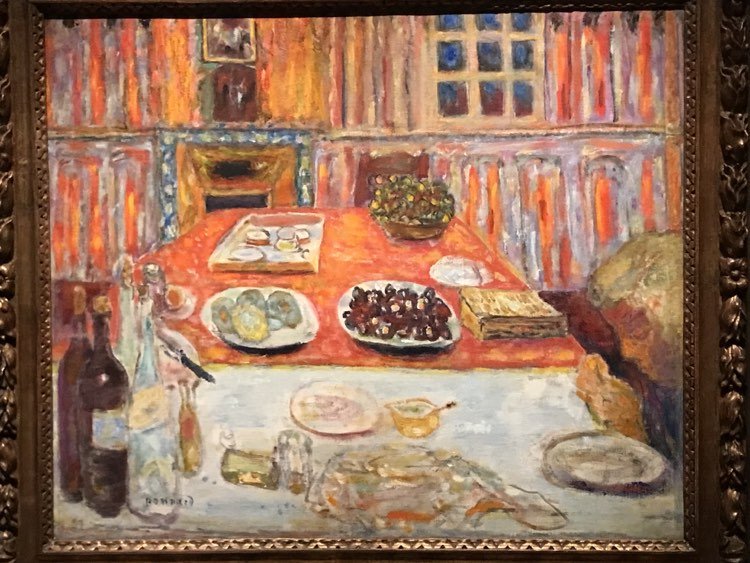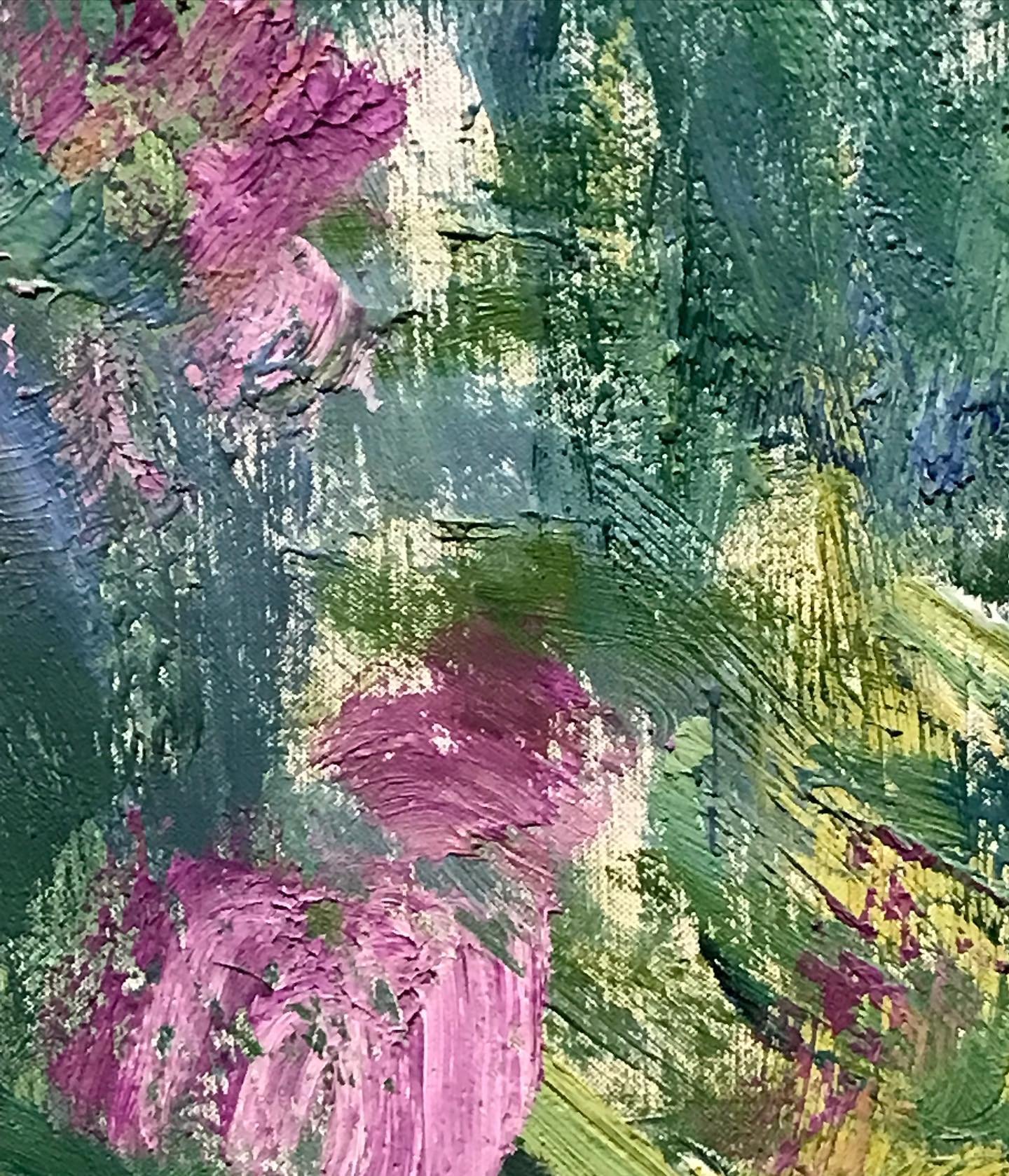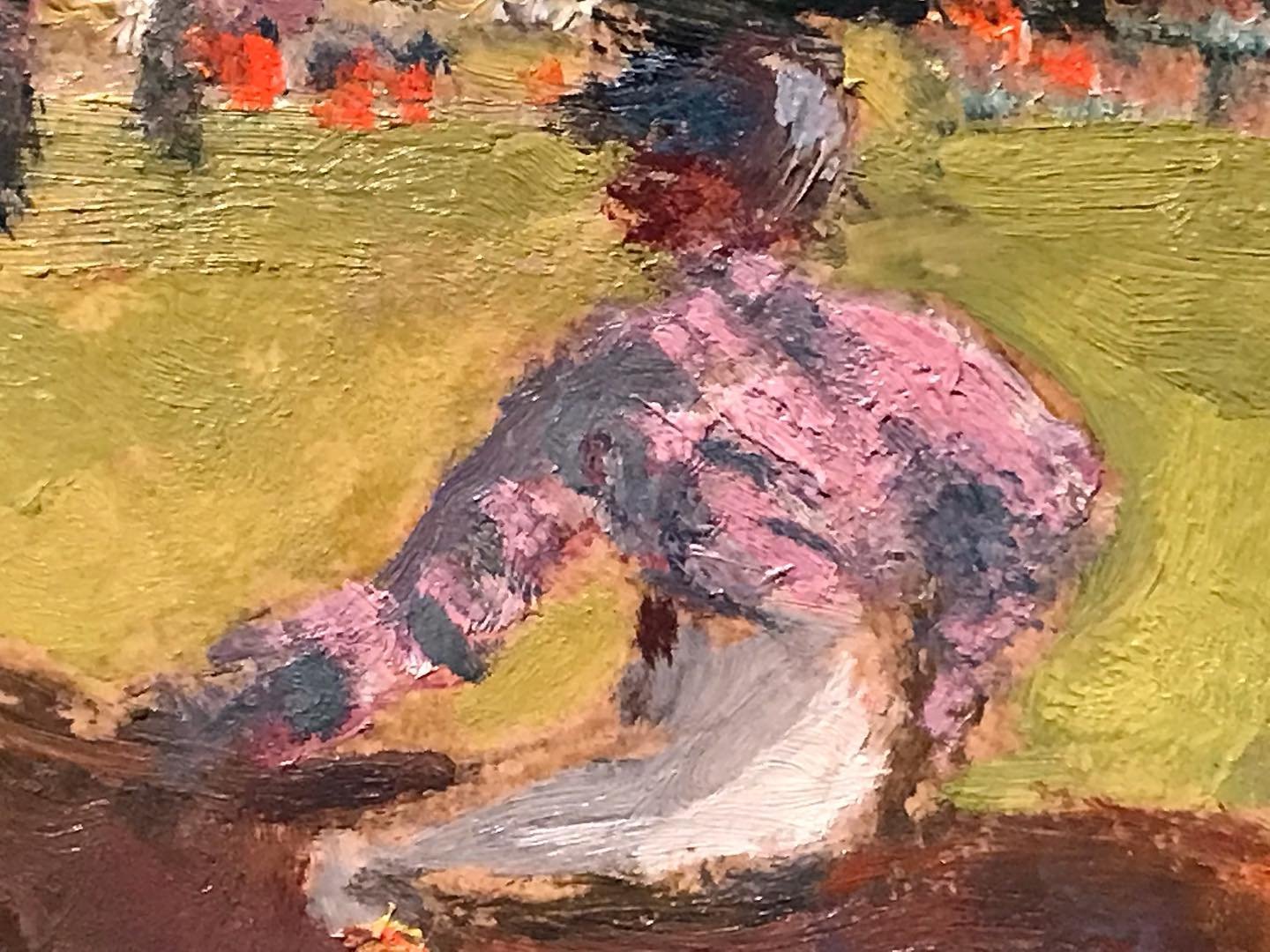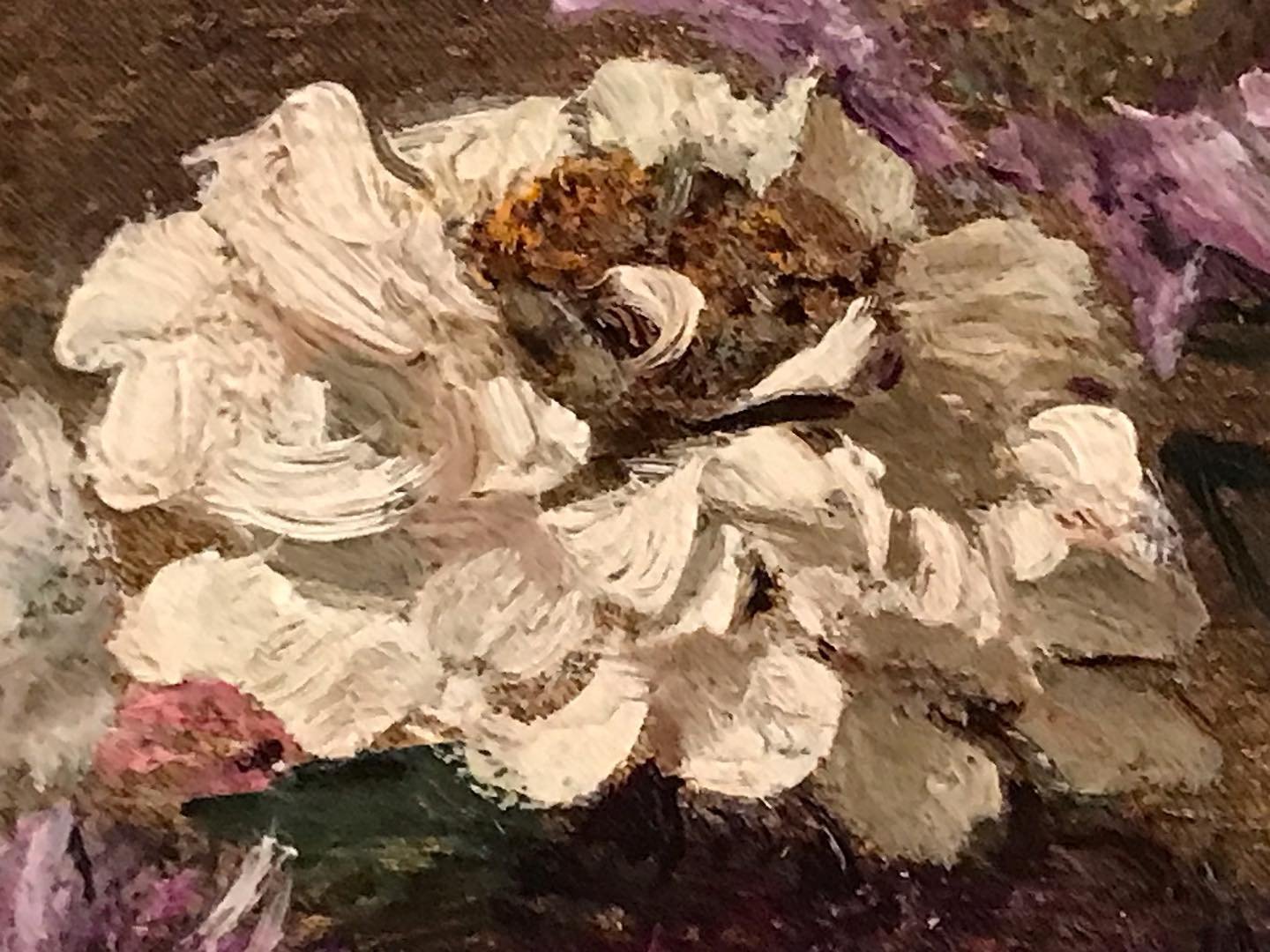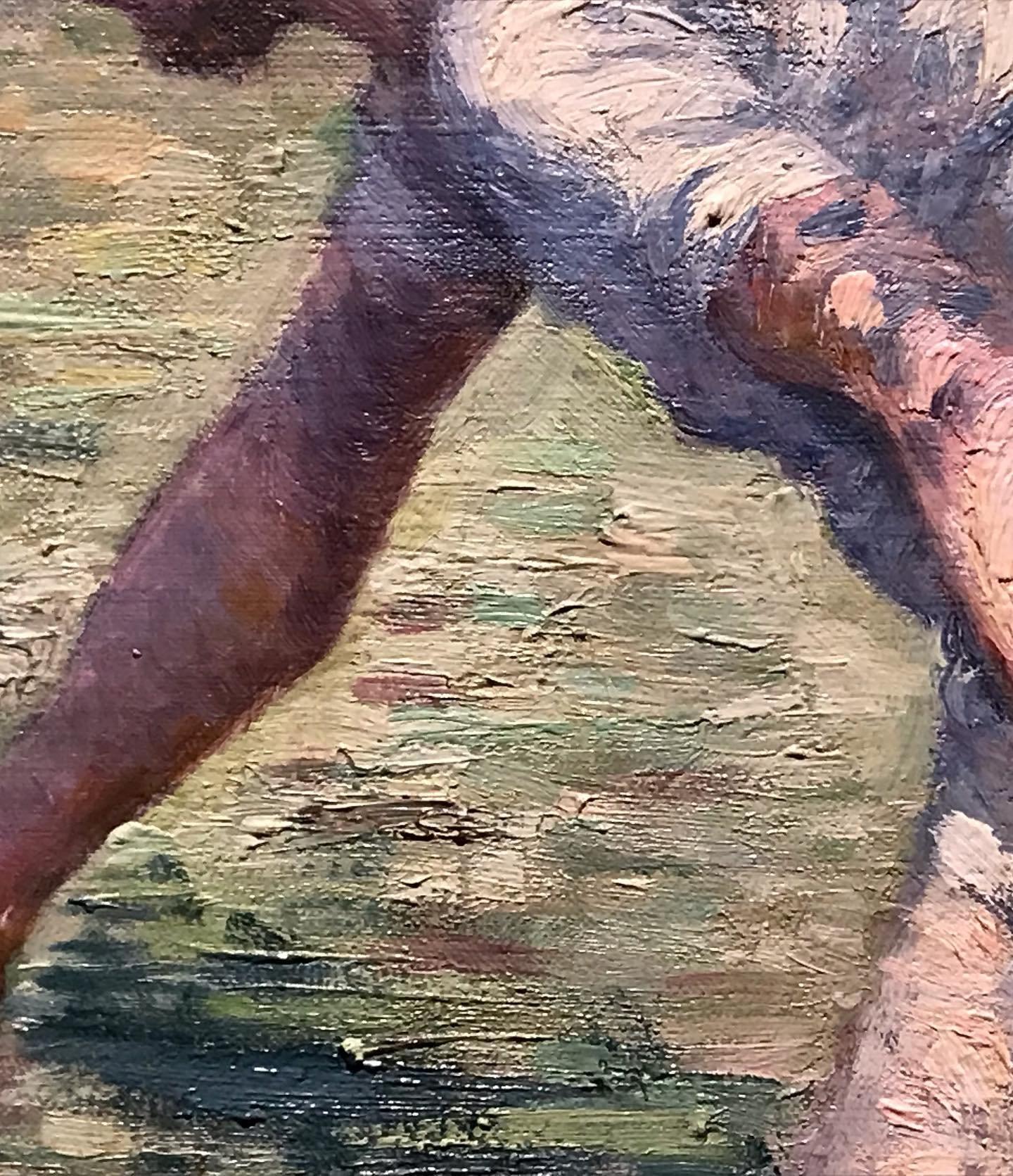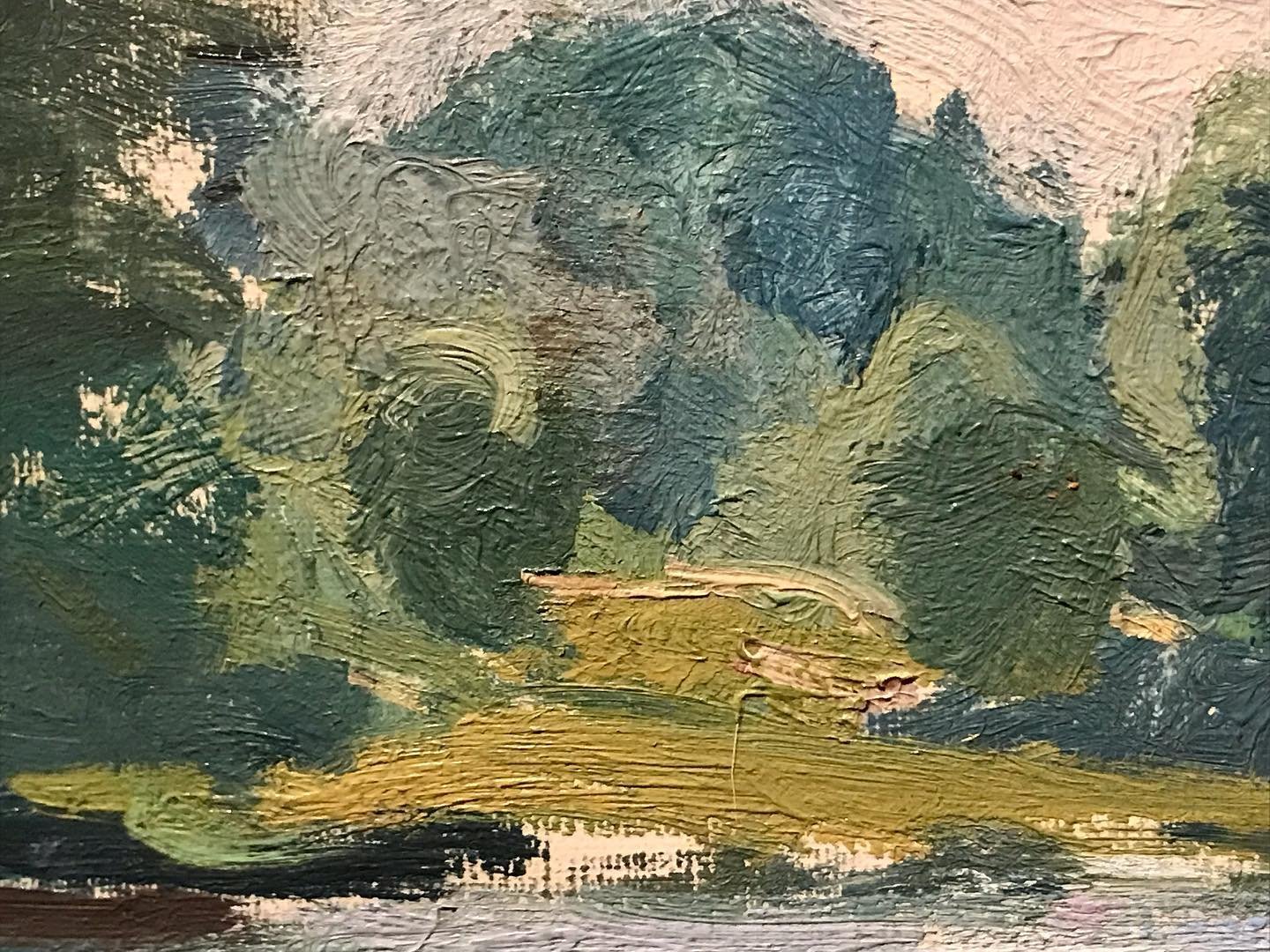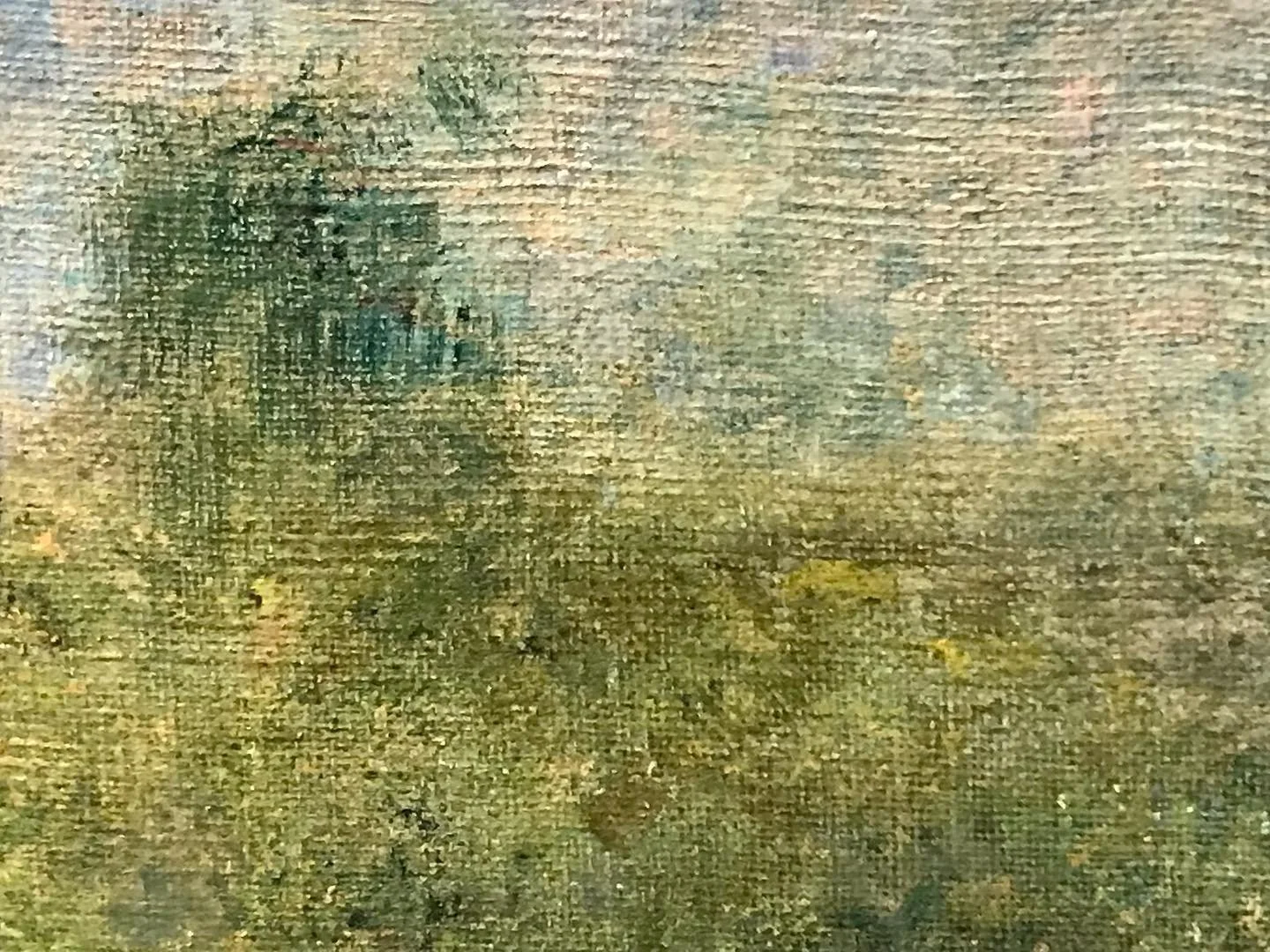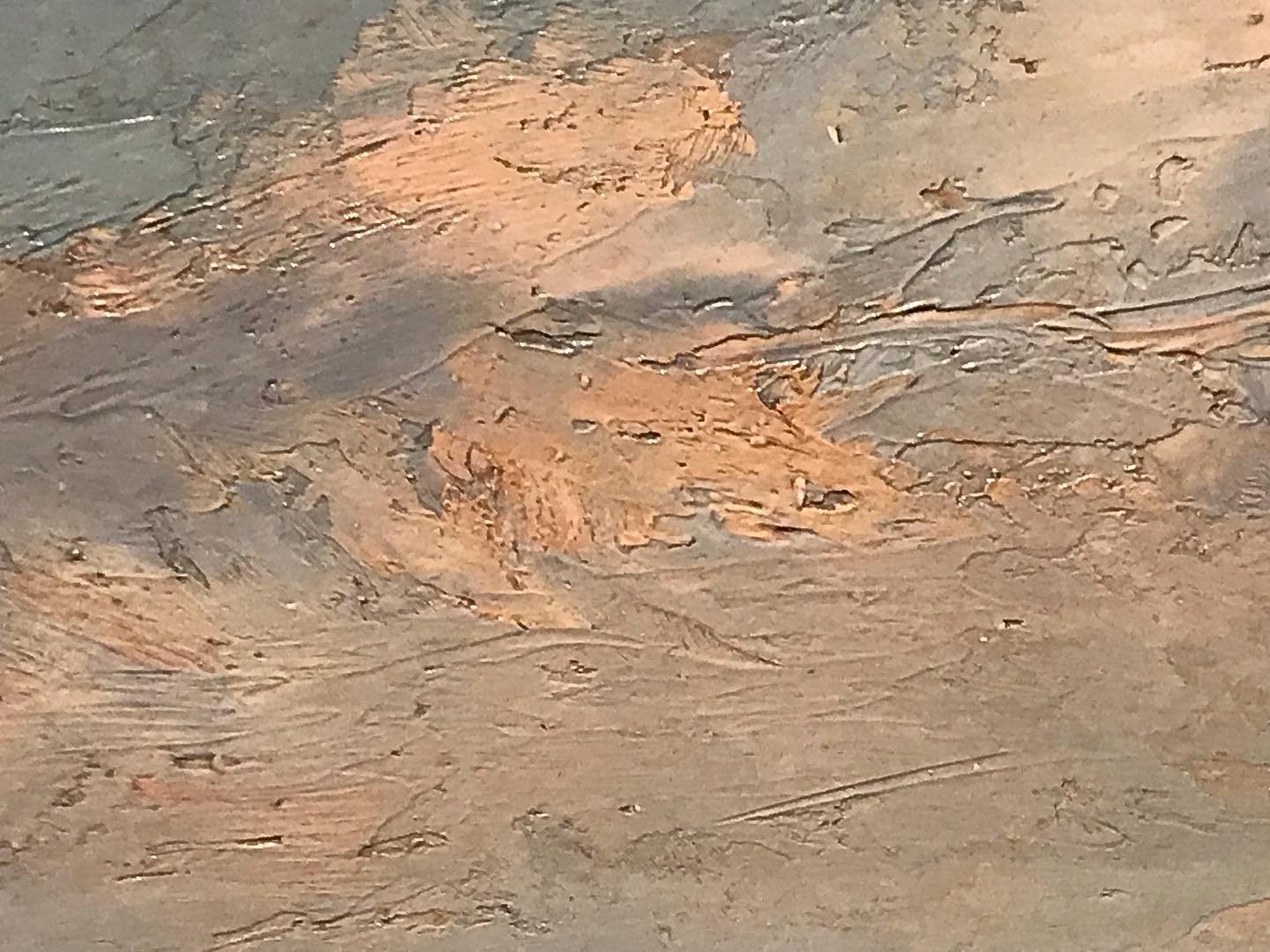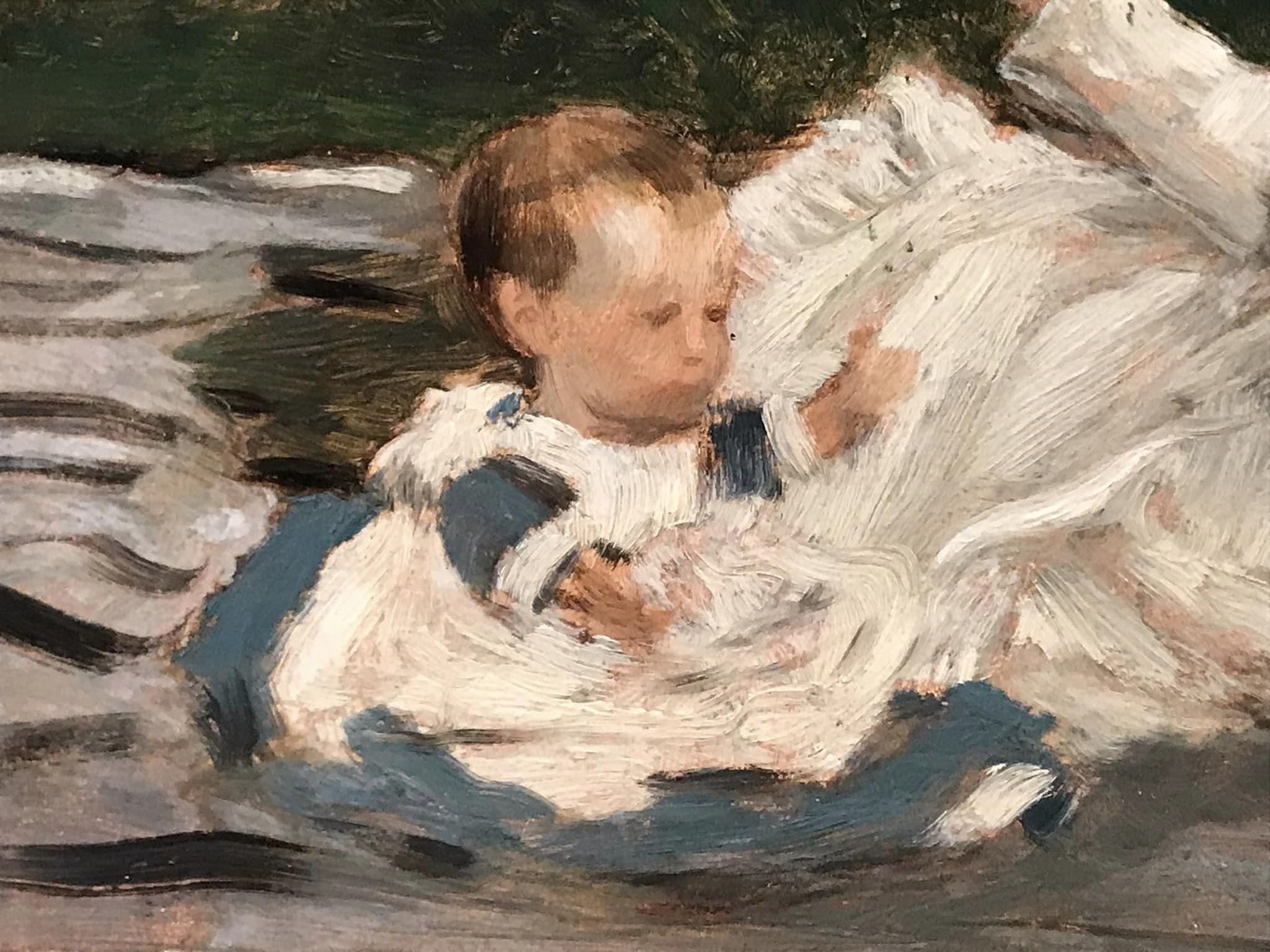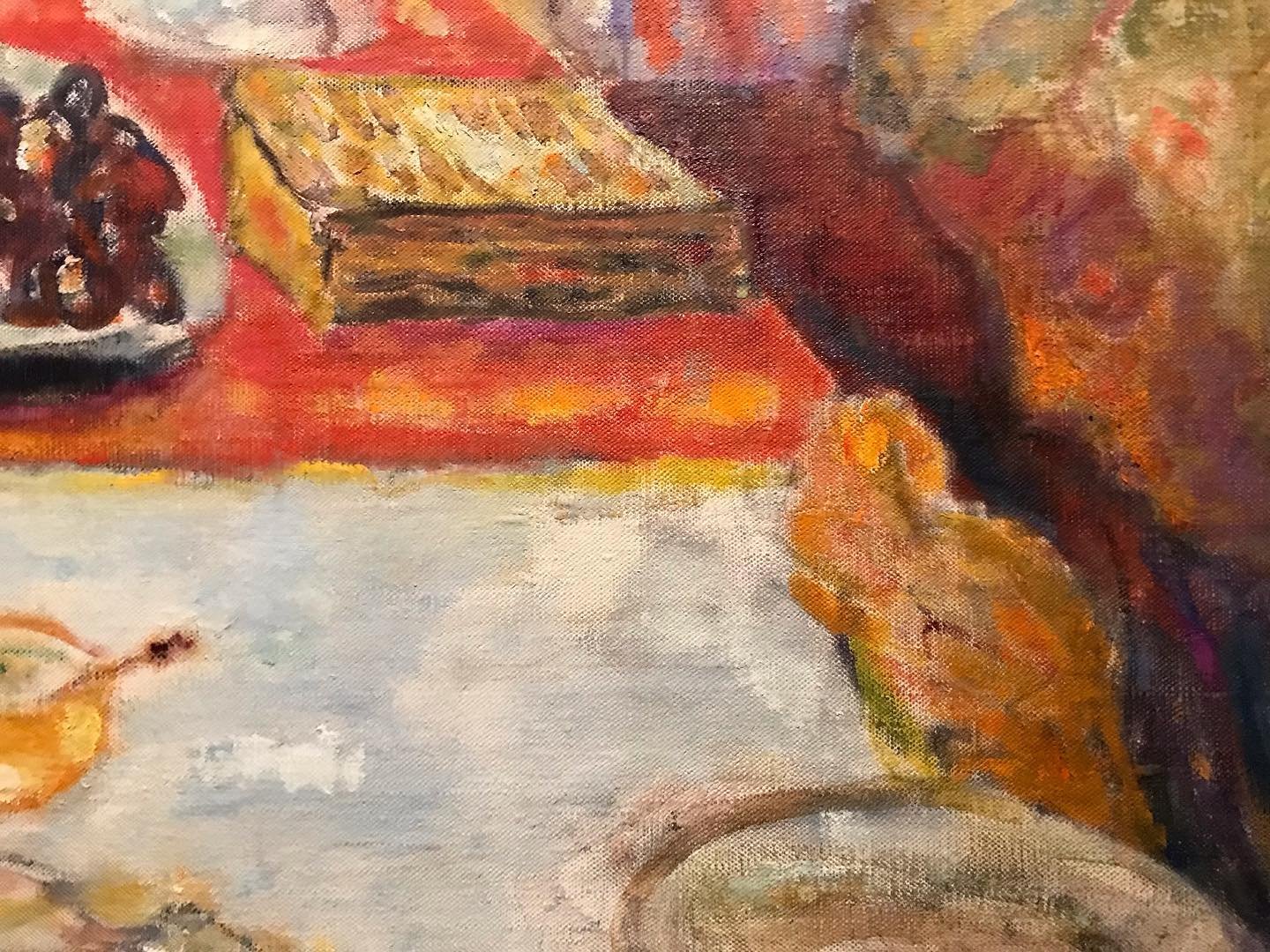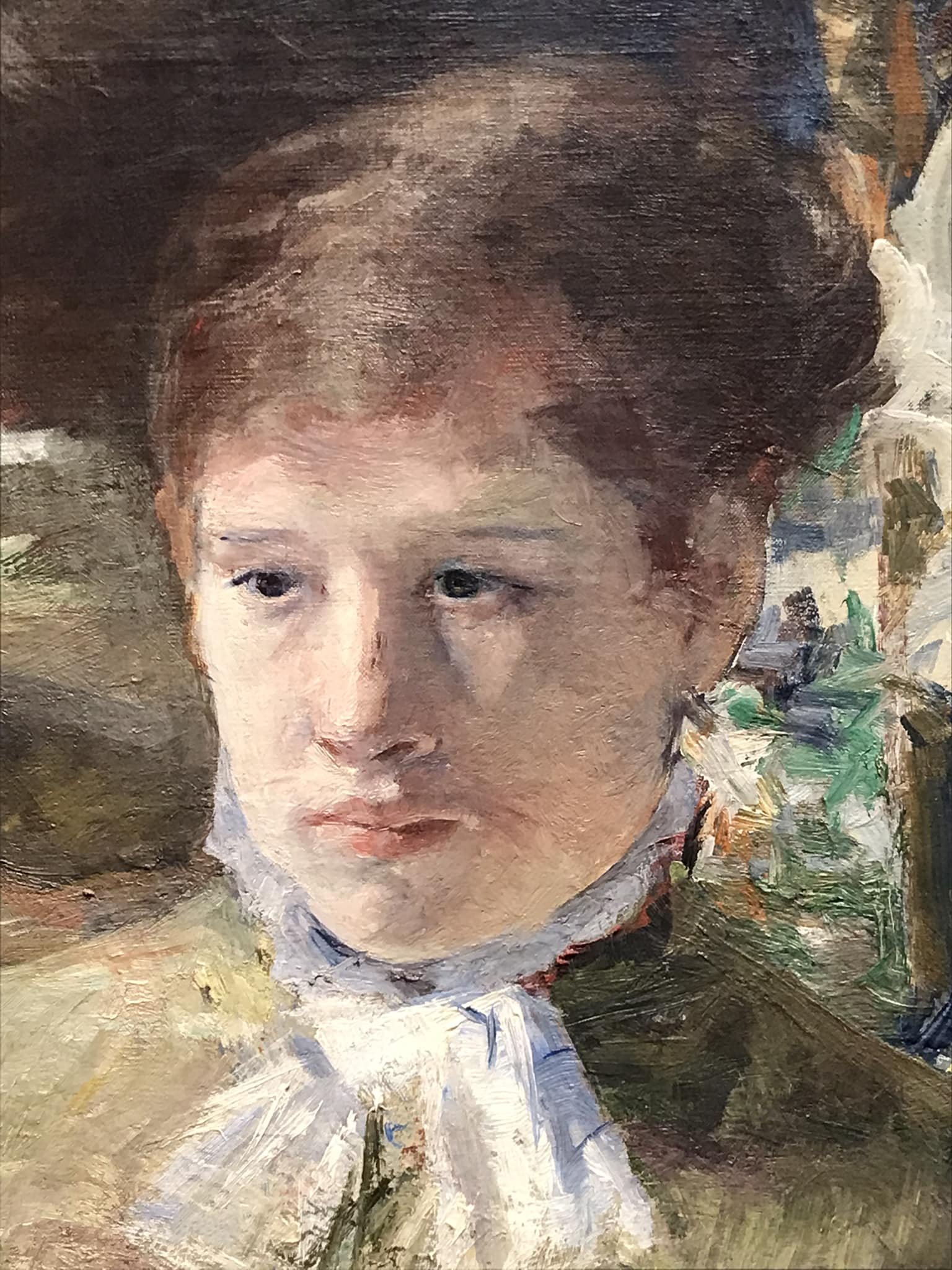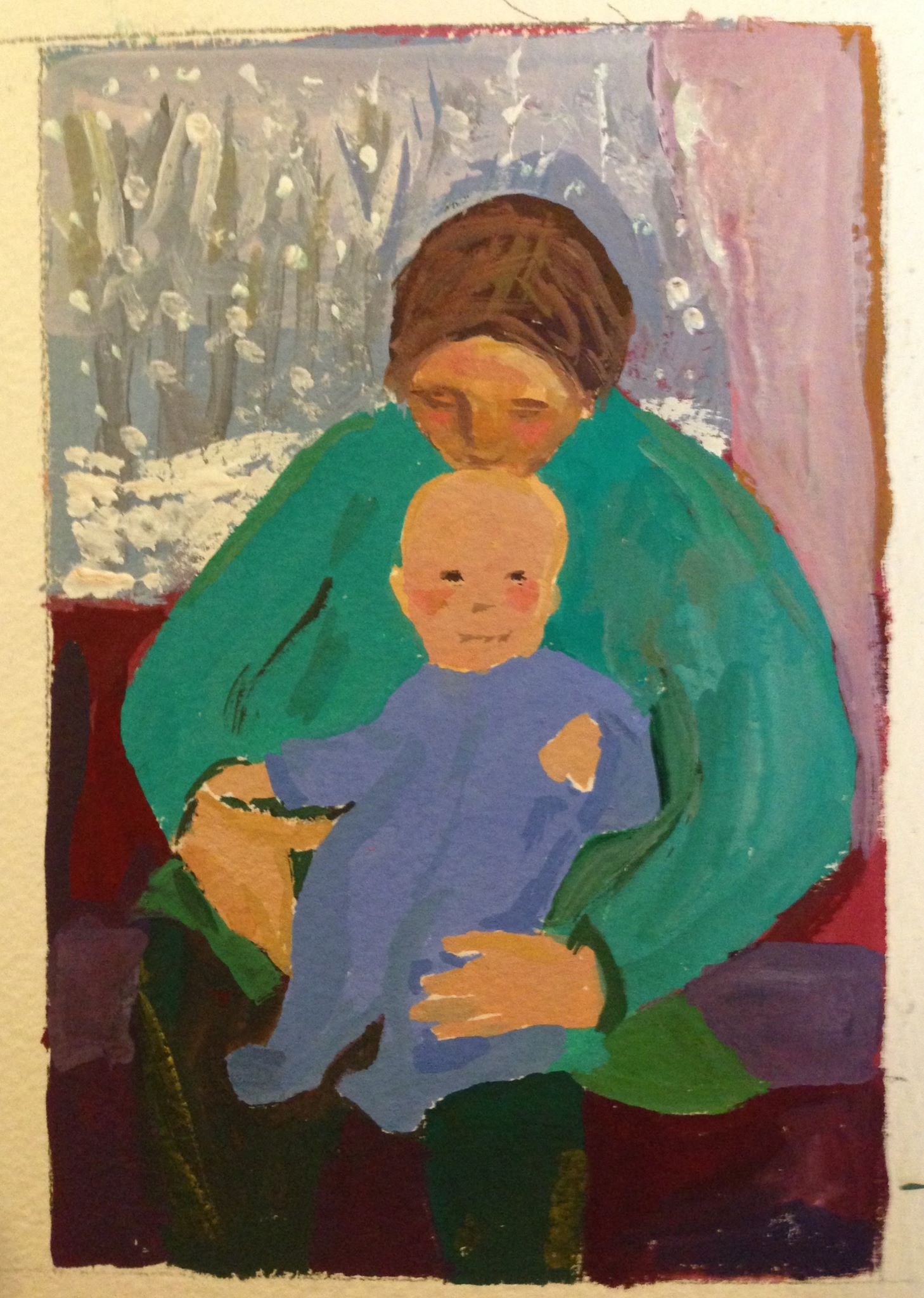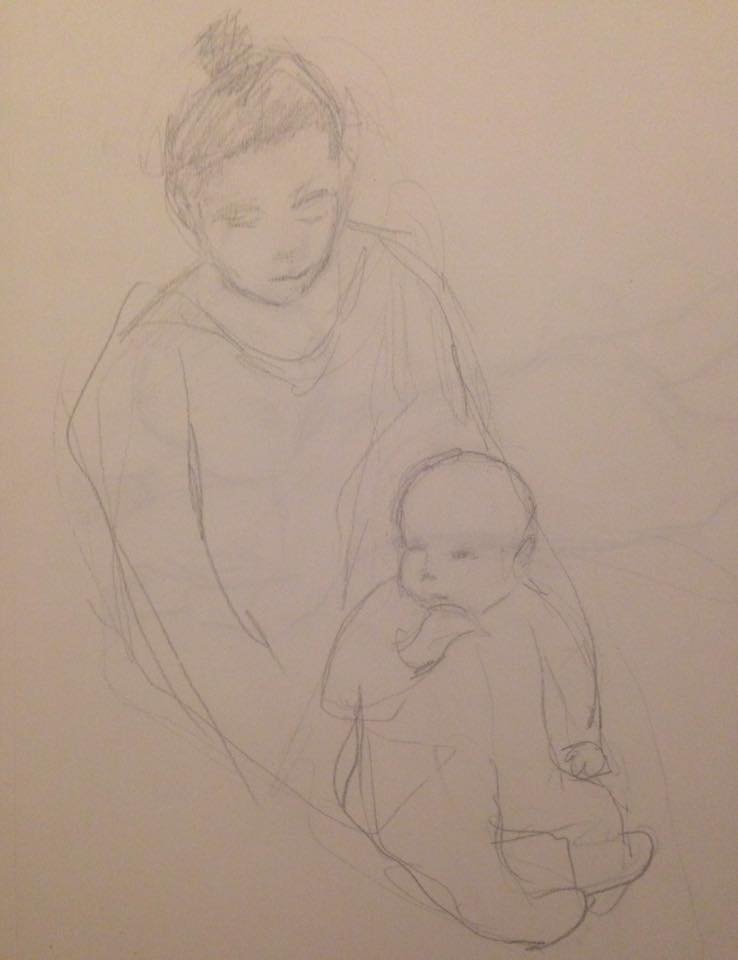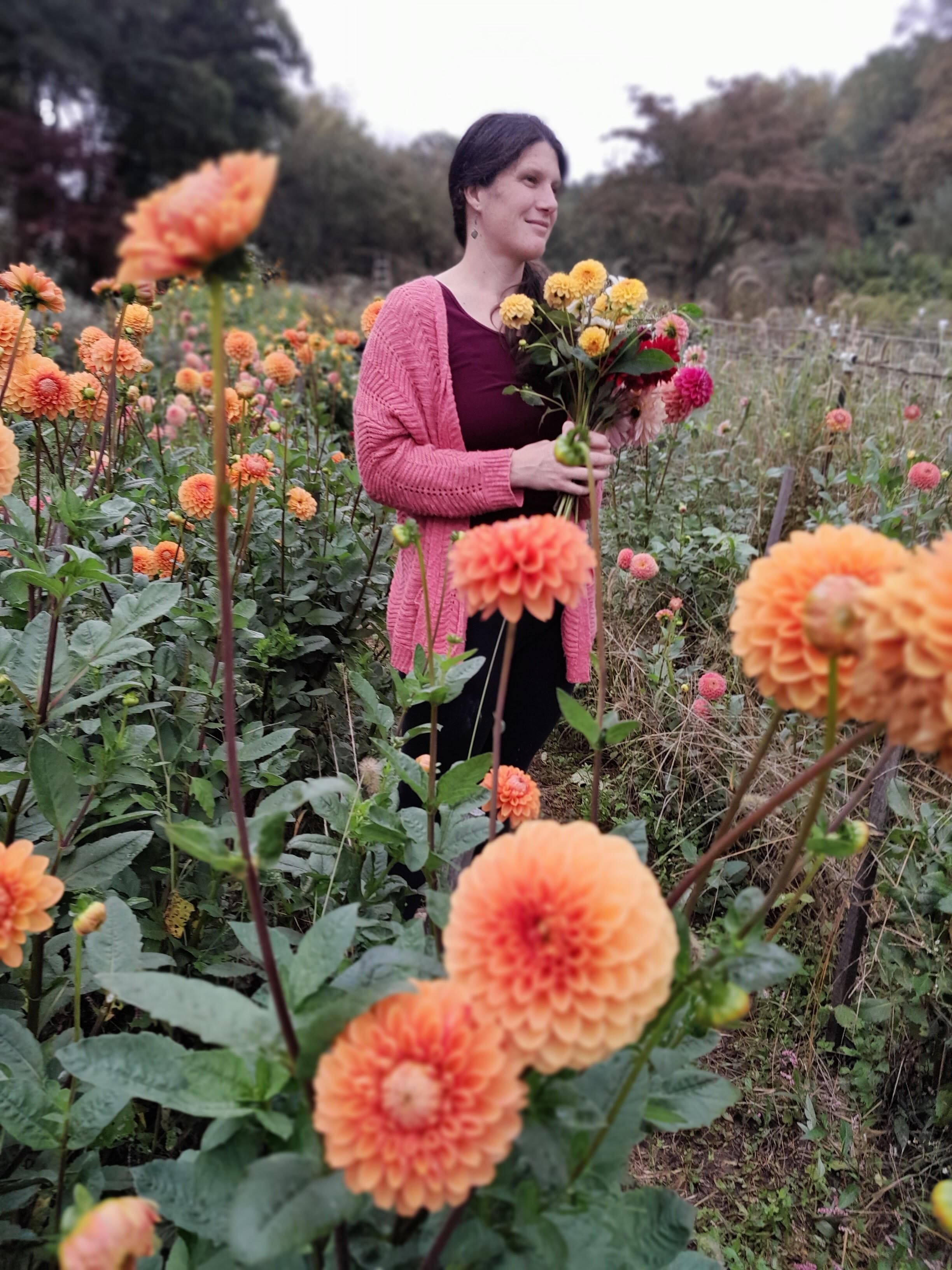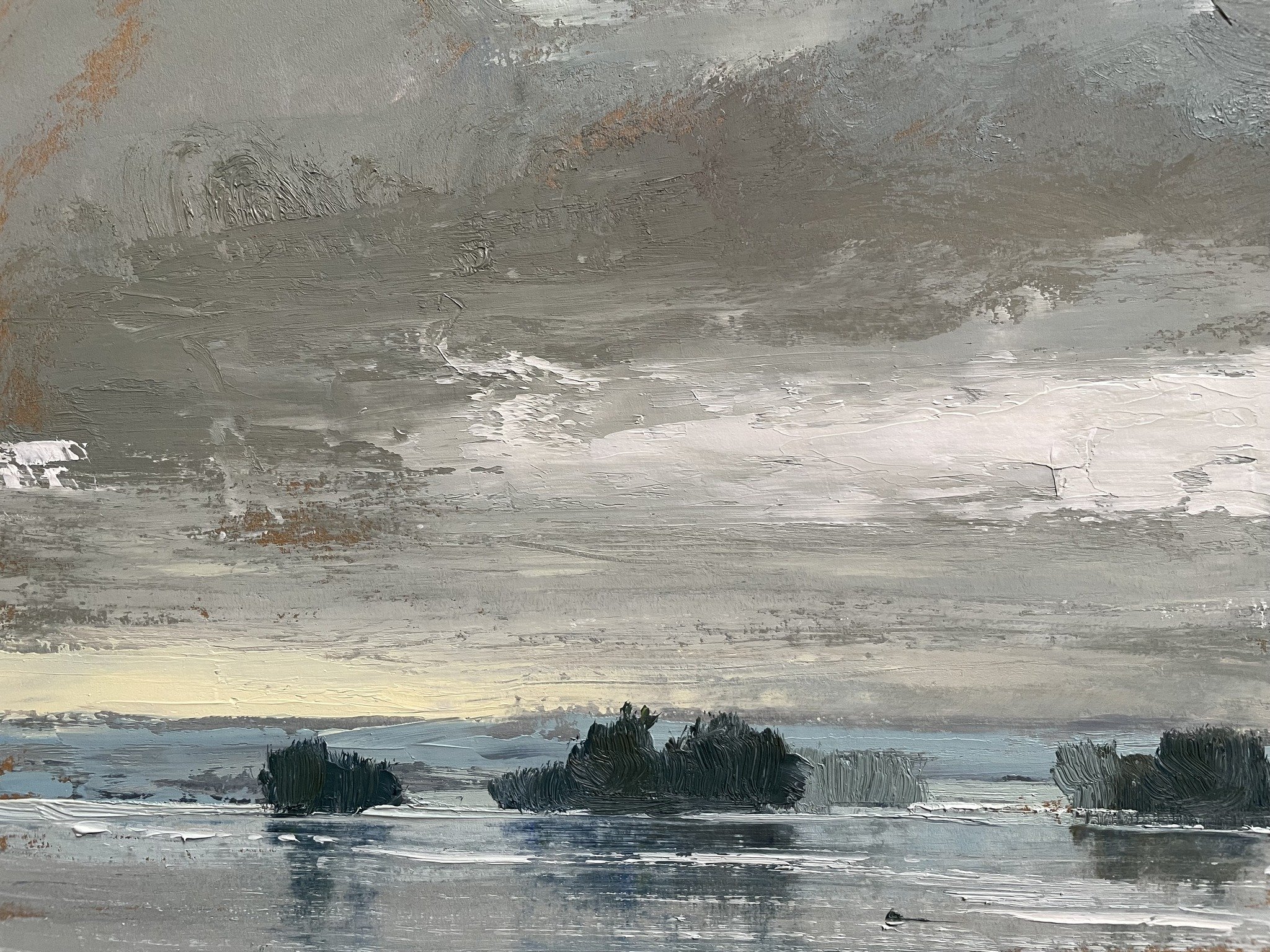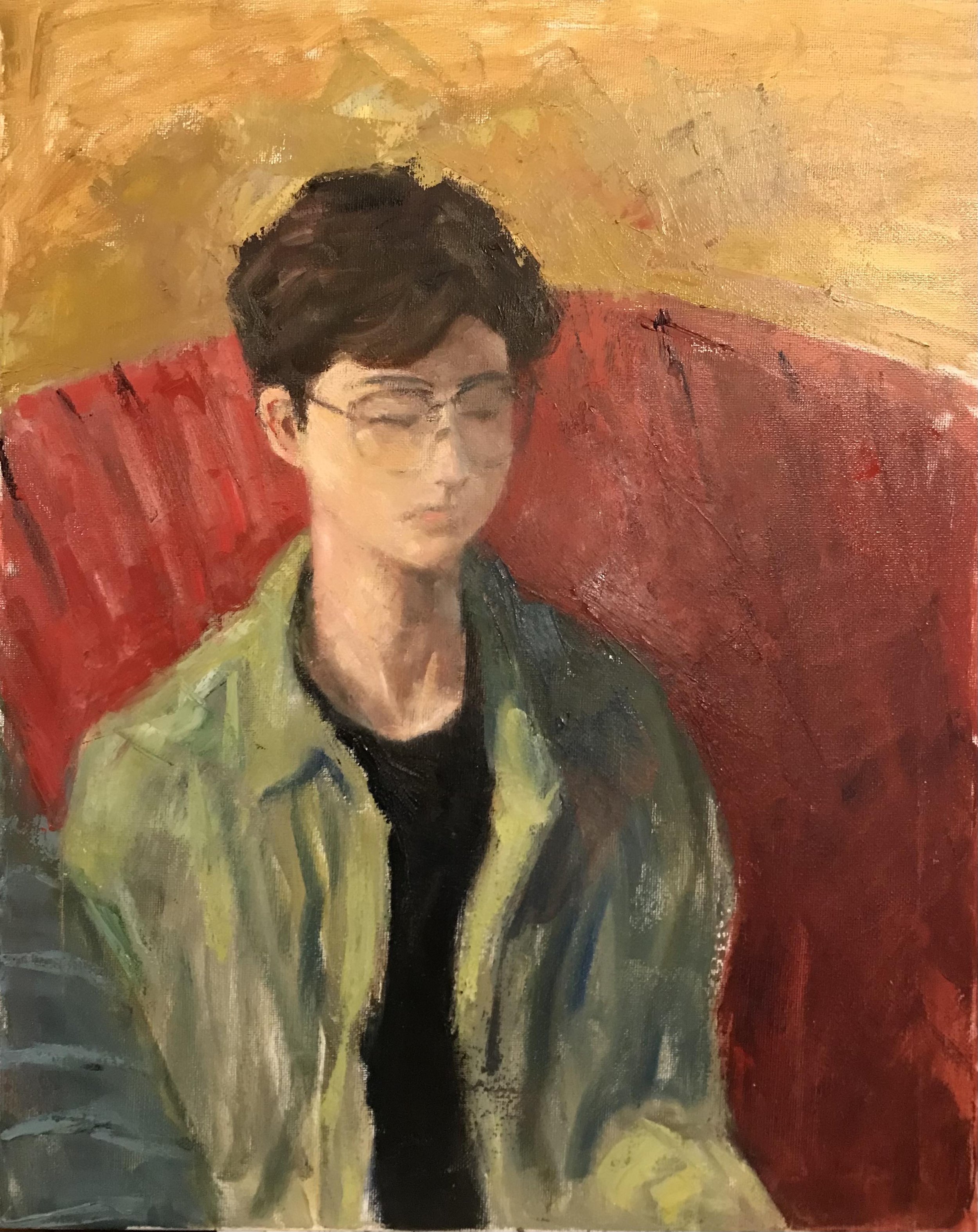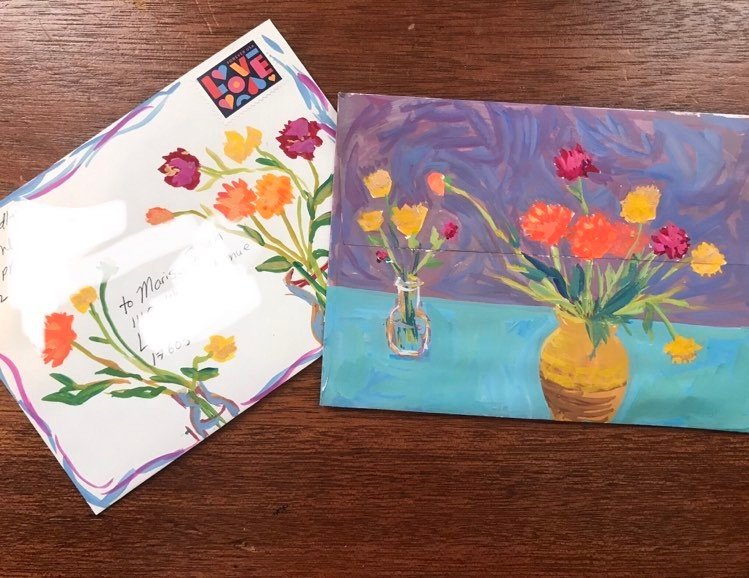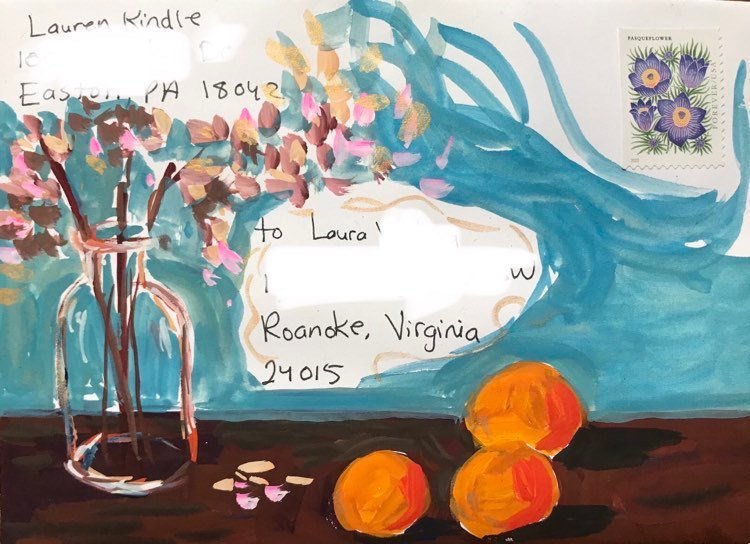I’m very honored to have three large oil paintings hanging in ThreeBirds Coffee House, my favorite coffeeshop in my little city of Easton, Pennsylvania. These paintings will be hanging through mid-June or thereabouts. Recently, some customers in the cafe kindly gave their permission to be photographed, and I’m delighted to share these photos with you.
If you live close enough, please check them out in real life! I recommend the chai latte, it’s my favorite: not too sweet, and plenty of spiciness.
Man working below “Evening Pizzicato.”
“Evening Pizzicato” oil on canvas, 54 × 64 inches
This is the largest painting I have ever painted, so far. It is inspired by a Bonnard painting, Dining Room in the Country. My own painting draws from Bonnard’s, as well as from my own imagination. I also referred to sketches I did of my teenage son Morgan playing his upright bass.
People having coffee below “The Red Blanket.”
“The Red Blanket” oil on canvas, 24 × 40 inches
“The Red Blanket” is a painting I did of my husband Ian on June 19th, 2024. That day was our 20th wedding anniversary! We celebrated with a mini-getaway in Woodstock, New York. I rented a cute air bnb, and bought many bouquets of flowers, filling the room with them. Ian posed for me for six hours on the couch. He lay on a new beautiful red blanket that I purchased specifically for this painting. What a good sport!
Woman at cafe, below “Peonies.”
“Peonies” oil on canvas, 24 × 36 inches
Finally, “Peonies” is a painting that I did, partly from life, partly from memory and imagination. It is a self portrait of me, in my house, drinking tea. I painted “Peonies” last June, immediately after seeing an amazing Bonnard exhibit at the Phillips Collection in Washington DC. I went with my mom, and it was a wonderful art-adventure that we did together. As always, Bonnard gave me so much inspiration.
A cup of tea…
So, please treat yourself to a tea or coffee at ThreeBirds sometime soon, and check out my paintings!





























